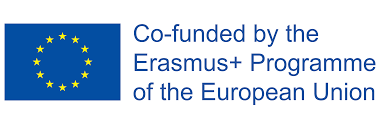

Courses
The Jean Monnet Chair in Risk and Crisis Communication in the EU offers the following undergraduate courses:
- Crisis Management in the EU: Operational Capabilities and Mechanisms
- Crisis Communication
- Crisis Frames: Towards A European Perspective
- Emerging Technologies in Crisis Communication
Each course grants 5 ECTS. Moreover, all courses are designed based on innovative student-based learning and teaching methods such as decision-focused case studies, role-playing simulation of crisis, simulations using social media, participation as members of crisis response teams, delivery of emergency messages to key stakeholders through videos or social media messages, holding press conferences, conducting interviews with journalists, writing press releases, group assignments, and active participation in research projects. Students are also encouraged to participate in various research activities of the Chair such as collecting data from recent crises-disasters, conducting content analysis of data and interviews, and administering survey questionnaires, etc.
The course intends to introduce students to the different types of crises faced by EU with emphasis on the transboundary crises as well as present the various EU sectoral agencies that are responsible for the effective management of different crises [e.g., European Medicines Agency (EMA), European Food Safety Authority (EFSA), European Centre of Disease Prevention and Control (ECDC), European Network and Information Security Agency (ENISA)].
Moreover, students will acquire an understanding of the EU crisis response mechanisms like the civil protection mechanism, the emergency response coordination center (ERCC), the integrated political crisis response arrangement (IPCR), the EEAS Crisis Response System (Crisis Platform, EU Situation, Room, Crisis Management Board), etc.
A significant part of the course will be dedicated to the analysis of the crisis management capacities of the EU during the different phases of a crisis with emphasis on the following capacities: detection, sense making, decision making, coordination, meaning-making and communication, and accountability
This course aims to analyse the various risk communication strategies and crisis frames used by different actors (such as EU agencies, media, and political leaders) across several types of crises. An important part of the course is dedicated to risk communication and will analyze the various risk communication models, the factors that affect risk perceptions and will also shed light on how various European agencies and organizations communicate publicly risks.
The course will also shed light on how media frame crisis events such as the EU refugee crisis, political scandals, as well as other anthropogenic crises or natural disasters. A comparative analysis of media frames utilised across European countries will also be analysed especially for transboundary crises. Topics related to disaster and crisis journalism, crisis reporting, and visual coverage of crises will also be discussed.
Moreover, crisis leadership will be an integral part of the course along with the issues of misinformation, disinformation, malinformation, and fake news on the internet during times of crises.
The aim of the course is to introduce students to the concept of crisis communication through a combination of theoretical approaches and case studies. During the course the various crisis communication theories (reputation theory, image repair theories, situational crisis communication theory, apologia, issues management theory) are presented with an emphasis in their utilization by organizations. The various crisis communication strategies are analyzed along with the factors that might influence their effectiveness.
Moreover, the course sheds light on crisis communication practices by various EU actors. By analyzing how various organizations such as corporate actors, institutions, and public personas in European member states communicate during crises, a European model of crisis communication could be developed.
In addition, the course highlights the role of media relations, media representatives, crisis communication plans and teams for the effective management of public perceptions. Students are trained on how to write press releases, announcements, prepare spokespersons for media interviews, and organize press conferences.
This course addresses the role of new technologies in crisis management and communication. A significant part of the course is dedicated to the use of new media during crises and disasters by various EU actors such as authorities, organisations, as well as citizens. Specifically, the social media communication strategies of EU agencies, national government authorities, and politicians of different European countries are analysed for a number of crises with the aim to map a European model of institutional social media crisis communication. In a similar vein, social media functions and uses of citizens of European countries are outlined. In addition, important guidelines are offered for the effective usage of new media by authorities as well as citizens.
Another part of the course introduces students to the various online platforms and applications that have been developed in Europe for crisis preparedness, coordination, and response. Moreover, the role of AI (artificial intelligence), big data, AR (augmented reality) and VR (virtual reality) in crisis communication and education is presented.
